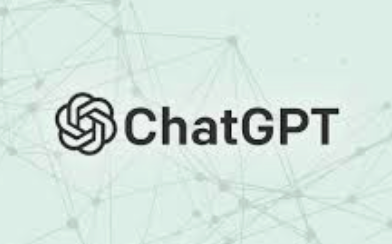Nansen: Blockchain Analytics Brings Transparency with Address Tagging and Trend Spotting – Crypto Projects to Watch 2023

Blockchain technology has been billed as the great transparency provider. It is the foundation of an open transfer system where every transaction is recorded for all to see. But the reality is that with so many transactions happening, the crypto space is filled with distracting noise that makes it difficult for users, developers, traders and organizations to make informed decisions based on the data.
Even when users drill down to analyze a single transaction, transparency is typically limited to the blockchain, the date, time, amount traded, and the addresses of the two parties, which equate to account identification numbers.
Projects have made progress in extracting useful information from this data. Etherscan, a block explorer, allows users to search and browse an address’s transaction history. Chainalysis, a platform focused on anti-money laundering, allows people to use its investigative software to monitor transactions in real time, for example.
And yet it is a challenge to understand transactions when the two parties are unknown and addresses are not identified. Two identical transactions can be perceived differently if the parties in one are individuals and the parties in the other are, for example, stock exchanges or banks. The latter may even be criminal.
Without identifying or doxxing the owner, could the public learn more about the address?
The inspiration for Nansen came from Crypto Twitter, said Nansen CEO Alex Svanevik.
Svanevik is a computer scientist. He saw viral tweets from people noticing, for example, $200 million USDT moving from one address to another and wondering who the owners of those addresses were. The blockchain was transparent to the extent that people could see capital moving and how much, but could not develop an understanding of why, without knowing anything about the addresses.
“We saw two needs in both the investor and builder camps where people could understand their own ecosystem and build better products,” Svanevik said.
Named after Norwegian polymath and Nobel Peace Prize winner Fridtjof Nansen, Svanevik and two other data scientists, Lars Bakke Krogvig and Evgeny Medvedev, launched the blockchain analytics platform Nansen in April 2020. Krogvig and Medvedev led engineering work focused exclusively on construction, while Svanevik led the business world. strategy and fundraising.
Their goal from the beginning was to attribute, characterize or label addresses, which is a difficult challenge simply because of the volume of data. They had to figure out how to sort data from several different blockchains, as well as different layer 2s, and put the data into a form that could be used for analysis.
Nansen’s website states that the company has tagged more than 250 million addresses across 10 different blockchains.
Based on a specific wallet’s behavior and activity, Nansen will use algorithms to infer the type of user and label wallets with a descriptor such as a fund, heavy decentralized exchange trader or private investor. In addition, Nansen adds an emoji to tell users whether a wallet is a smart contract or an exchange.
Nansen has over a hundred names in his toolbox and each wallet can be marked several times. However, it uses labels and does not typically expose people or reveal private identities, a Nansen blog post said, in keeping with the crypto ethos of privacy and respect for anonymity.
Nevertheless, many wallets are publicly known, such as those belonging to well-known figures including Justin Sun and Vitalik Buterin, and companies such as Wintermute and Jump Trading.
Nansen allows users to have a deeper insight into what is happening on the blockchain in real time. By naming wallets, users can see crypto market maker Wintermute withdraw millions of wBTC from Coinbase, when Justin Sun trades on a decentralized exchange or when a legendary non-fungible token (NFT) collector bought several PFPs from Milady Maker.
Nansen builds on the tagging capabilities and provides dashboards with sophisticated tools to analyze the data. One particularly useful dashboard is called Token God Mode, which allows users to do a deep dive into a specific token by showing the token’s distribution and activity on various exchanges, among other things.
Exchange Flows is another dashboard that shows users which wallets are interacting with exchanges, which tokens are flowing to and from exchanges as well as each exchange’s online flow of total tokens.
Nansen even has a dashboard called NFT Paradise that shows users recent swipes (defined as buying at least three NFTs in a single transaction), most profitable collections from flipping (defined as buying and selling within a selected time period) and the most popular NFT contracts in the last seven days.
Token God Mode, Exchange Flows and NFT Paradise are just three of several dashboards on Nansen that cut through the noise to allow users to focus on insights within certain parameters. “Instead of having 40 different tabs to look at analytics on a particular chain, you get all the information in one place in the entire information stack,” Svanevik said.
Nansen is headquartered in Singapore and has approximately 150 employees in 38 countries. Svanevik said he sees Nansen as an important player in the future of finance. Several securities companies showed that they agree. Accel, GIC (Singapore’s sovereign wealth fund), Andreessen Horowitz (a16z), Tiger Global and SCB 10X have invested a total of $88 million, according to Svanevik.
He said he hopes that by 2035, the crypto community will have “built a new financial fabric for the world so that traditional finance will be replaced with blockchains.” And Svanevik is willing to do his part to make that happen. “This future is not going to happen by itself,” he said.
Openness is the key to building, Svanevik said.
The first step is to ensure that pioneers entering the crypto space – builders, investors, traders – succeed. “If we can help them get the best information so they can see success, they will reinvest in the industry. And if they reinvest in the industry, the whole industry will flourish. … You get new companies and projects that come to fruition to build this future that we all want, Svanevik added.
























